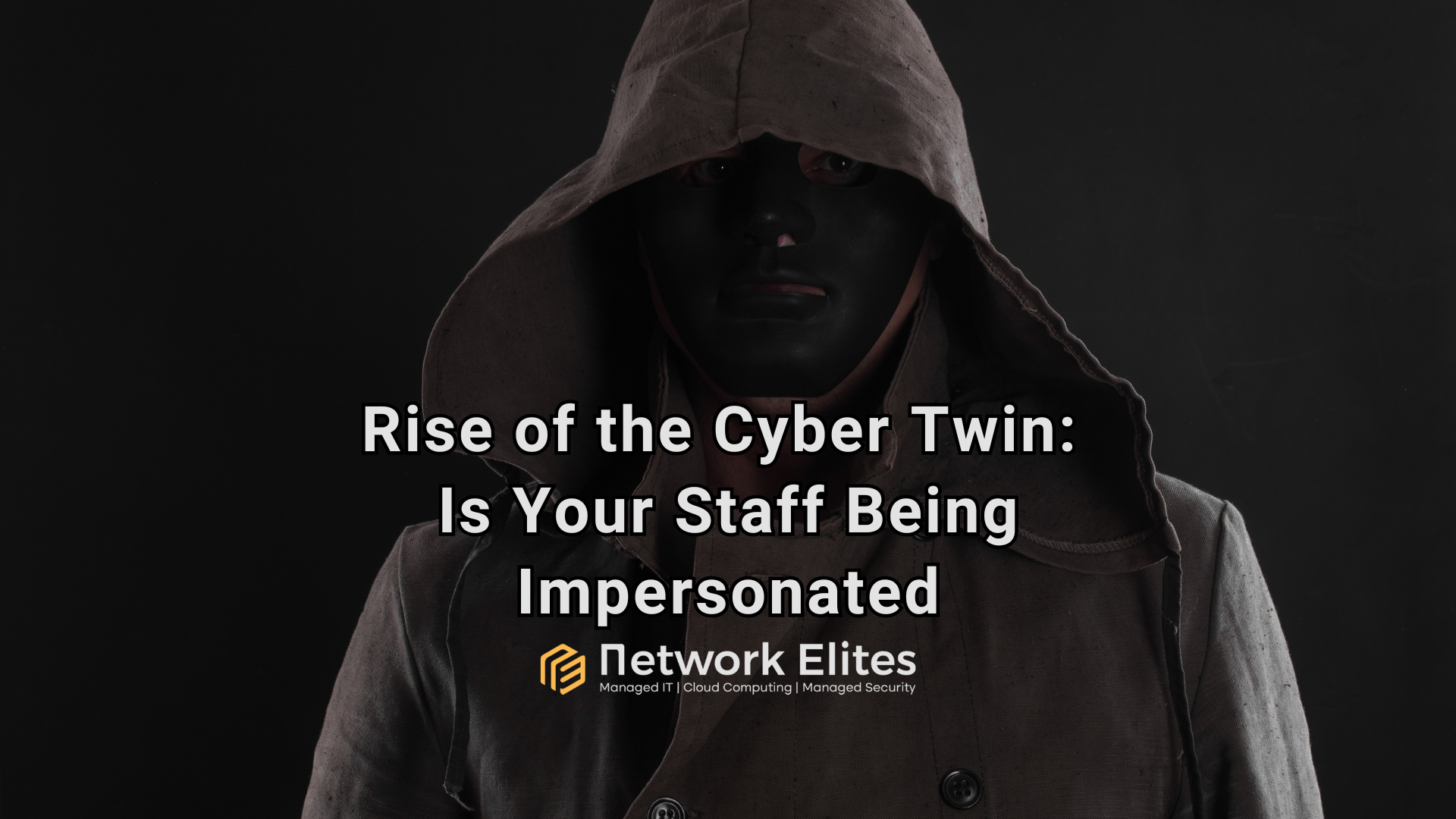Rise of the Cyber Twin: Is Your Staff Being Impersonated?
Imagine discovering a digital version of your CEO—a 'cyber twin'—with a complete professional profile, engaging with your clients, and even attempting to access sensitive company data. This isn't science fiction; it's a growing threat for businesses worldwide. These fake digital identities are meticulously crafted by malicious actors to impersonate key staff members, opening the door to sophisticated fraud, data breaches, and reputational damage.
A cyber twin is more than just a fake social media account. It's a comprehensive, fraudulent digital identity built using publicly available information, data from previous breaches, and social engineering. Attackers create convincing profiles on platforms like LinkedIn, company directories, and even internal communication tools. Their goal is to trick employees, partners, and customers into believing they are interacting with a legitimate colleague, allowing them to exploit that trust for criminal gain.
Understanding this threat is the first step toward safeguarding your organization. This guide will explain the significant risks cyber twins pose, provide actionable strategies for prevention and detection, and outline how to protect your business and its people from this emerging form of digital impersonation.
The Risks of a Digital Doppelgänger
A convincing cyber twin can cause severe and lasting damage to a business. The dangers extend beyond simple financial loss, impacting every facet of your organization from internal security to market reputation. Ignoring this threat leaves your company vulnerable to a variety of calculated attacks.
Financial Fraud and Asset Diversion
The most direct threat is financial. A cyber twin can impersonate a high-level executive, like the CFO, and authorize fraudulent wire transfers. They might instruct an employee in the finance department to pay a fake invoice or divert funds to an account controlled by the attacker. Because these requests appear to come from a legitimate authority figure, they often bypass standard security checks, leading to significant financial losses before the deception is uncovered.
Data Breaches and Intellectual Property Theft
Cyber twins are a powerful tool for espionage. By posing as a trusted employee, an attacker can gain access to confidential information, including trade secrets, customer databases, and proprietary product designs. They can trick colleagues into sharing login credentials or sending sensitive documents. Once inside your network, they can exfiltrate valuable data, giving your competitors an unfair advantage or selling your intellectual property on the dark web.
Reputational Damage and Loss of Trust
The existence of a cyber twin can erode the trust that your clients, partners, and employees have in your organization. When a fake profile starts interacting with your network, it can spread misinformation, make false promises, or engage in unprofessional behavior, all while appearing to represent your company. The fallout from such an incident can damage your brand's reputation for years, making it difficult to retain customers and attract new talent.
Phishing and Malware Distribution
Attackers often use cyber twins as a launchpad for broader cyberattacks. Posing as a colleague, the impersonator might send a "helpful" link to a new project or an "urgent" document that needs review. These links often lead to phishing sites designed to steal credentials or download malware, such as ransomware, onto the company's network. A single click from an unsuspecting employee can compromise the entire organization.
How to Prevent Cyber Twin Attacks
Proactive defense is the most effective strategy against digital impersonation. By implementing a multi-layered security approach, you can make it significantly more difficult for attackers to create and leverage cyber twins.
Strengthen Your Digital Footprint Management
The first line of defense is controlling the information available about your employees online.
- Conduct Regular Audits: Routinely search for public information about your key executives and employees. Use search engines and social media platforms to see what data is openly accessible.
- Educate on Privacy Settings: Train your staff on the importance of using strong privacy settings on their personal and professional social media accounts, particularly LinkedIn. Encourage them to limit the amount of personal or company-specific information they share publicly.
- Establish Clear Policies: Create a company-wide policy on what information can be shared online. This should cover everything from job titles and responsibilities to project details and client names.
Implement Robust Identity Verification Protocols
Assume that digital identities can be faked and build processes to verify them.
- Multi-Factor Authentication (MFA): Enforce MFA for all internal systems, including email, collaboration tools, and financial software. This ensures that even if an attacker obtains a password, they cannot gain access without a second form of verification.
- Out-of-Band Verification: For sensitive requests, such as wire transfers or data access, require verification through a different communication channel. For example, if an email requests a large payment, mandate a follow-up phone call or in-person confirmation to the sender's official contact number.
Foster a Culture of Security Awareness
Your employees are your most critical defense. A well-trained team is more likely to spot and report suspicious activity.
- Regular Security Training: Conduct ongoing training sessions that specifically cover social engineering, phishing, and the threat of impersonation attacks. Use real-world examples to illustrate how these attacks work.
- Simulated Phishing Tests: Periodically send simulated phishing emails to test employee awareness. Use the results to identify areas where additional training is needed.
- Encourage Reporting: Create a clear and easy process for employees to report suspicious emails, messages, or profiles without fear of blame. A "see something, say something" culture is essential.
How to Detect an Existing Cyber Twin
Even with strong preventative measures, a determined attacker may still succeed in creating a cyber twin. Early detection is crucial to minimizing the damage.
Proactive Brand and Executive Monitoring
Continuously monitor the digital landscape for signs of impersonation.
- Set Up Automated Alerts: Use services that monitor the web and social media for mentions of your company name, brand, and the names of your key executives. Set up Google Alerts or use specialized brand monitoring tools.
- Regularly Search Social Media: Manually search platforms like LinkedIn, X (formerly Twitter), and Facebook for duplicate or unauthorized profiles of your employees. Look for slight variations in names, titles, or profile pictures.
Look for Red Flags in Communication
Train your team to recognize the subtle signs of an impersonation attempt.
- Unusual Language or Tone: An email or message that uses different phrasing, grammar, or tone than the person it supposedly comes from is a major red flag.
- Urgent or Threatening Requests: Attackers often create a sense of urgency to pressure employees into acting without thinking. Be skeptical of any unexpected request that demands immediate action.
- Incorrect Contact Information: Check email addresses and contact details carefully. Attackers often use look-alike domains (e.g.,
ceo@yourc0mpany.cominstead ofceo@yourcompany.com).
Leverage Technology for Detection
Use security tools to help identify and block threats.
- Advanced Email Filtering: Implement an email security solution that can detect signs of impersonation, such as mismatched sender names and email headers.
- Digital Risk Protection Services: Consider investing in a Digital Risk Protection (DRP) service. These platforms specialize in identifying and taking down fraudulent accounts, fake domains, and other external threats.
Secure Your Organization Today
The threat of cyber twins is real and growing. These fraudulent identities are not just a nuisance; they are a strategic tool used by criminals to infiltrate businesses, steal assets, and destroy reputations. By taking a proactive stance, you can build a resilient defense against this sophisticated form of attack.
Protecting your organization requires a combination of technology, policy, and people. Start by educating your leadership and employees about the risks. Implement strong identity verification measures and foster a culture where security is everyone's responsibility. By monitoring your digital presence and training your team to spot the signs of impersonation, you can ensure that your staff—and their digital identities—remain secure.








